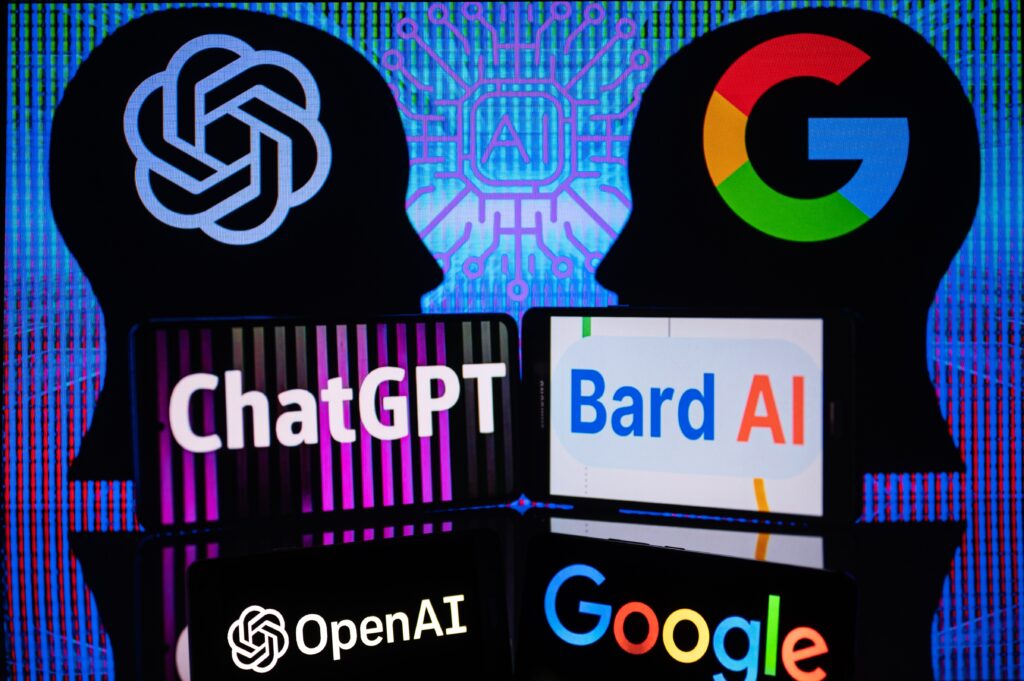
Many of you have been invited to try Bard, the latest AI tool to hit the marketplace from Google. So how does Bard differ from ChatGPT?
Both Bard and ChatGPT are large language models (LLMs) capable of generating text, translating languages, creating various types of content, and answering questions informatively. A large language model is an artificial intelligence designed to understand and generate human-like text. These models are trained on vast amounts of written content, allowing them to recognize patterns in language and predict what comes next in a sentence. As a result, they can create coherent and contextually relevant text, answer questions, and even engage in conversation. With continuous advancements, large language models are becoming increasingly sophisticated, enabling them to perform tasks that mimic human language abilities.
While Bard and Chat GPT-4 might seem similar, the two models have some critical differences.
Bard is based on Google’s LaMDA language model, while ChatGPT uses OpenAI’s GPT-4 model. Google claims that LaMDA is more accurate and reliable than GPT-4. Bard is also trained on a more extensive text and code dataset, giving it a broader range of knowledge and abilities. And ChatGPT focuses more on problem-solving and text generation, while Bard excels at understanding and responding to questions conversationally. Additionally, ChatGPT can render text in various styles, while Bard generates informative text with a friendly tone.
Both Bard and ChatGPT are still under development, but they are impressive language models with diverse applications.
The top three use cases for Bard include:
- Content creation: Bard can generate various creative text formats, such as poems, code, scripts, musical pieces, emails, and letters.
- Translation: Bard can translate both text and speech in different languages.
- Question answering: Bard can answer your questions informatively, even if they are open-ended, challenging, or unusual.
To ask Bard questions, type them into the text box at the top of the page. Bard can understand and respond to various inquiries, including factual information, opinions and beliefs, creative ideas and concepts, and personal experiences. You don’t need to assume specific prompts or roles to ask questions. However, context can help Bard answer more accurately.
There are a few limitations to Bard, such as generating text that is not always factually accurate, sometimes misinterpreting context, and occasionally producing generic or unoriginal content. However, like ChatGPT, Bard is constantly being improved, and these limitations will be reduced over time.
According to Bard, reasons to choose it over ChatGPT include the following:
- Generating more accurate and creative text
- Accessing real-world information through Google Search
- Having more natural conversations with users
Ultimately, the best choice depends on your specific needs and preferences.
So, Google Bard is this promising and versatile AI language model that can do wonders for content creation, translation, and even answering questions. It might seem a bit intimidating at first, but don’t worry! I’d love to hear about your experiences and insights as you give it a whirl. Are you thinking about trying Bard? Drop your thoughts, expectations, and any questions you might have in the comments below. Your input will help spark a valuable conversation about the potential and impact of AI-driven language models like Bard in the HR industry.
You must be logged in to post a comment.